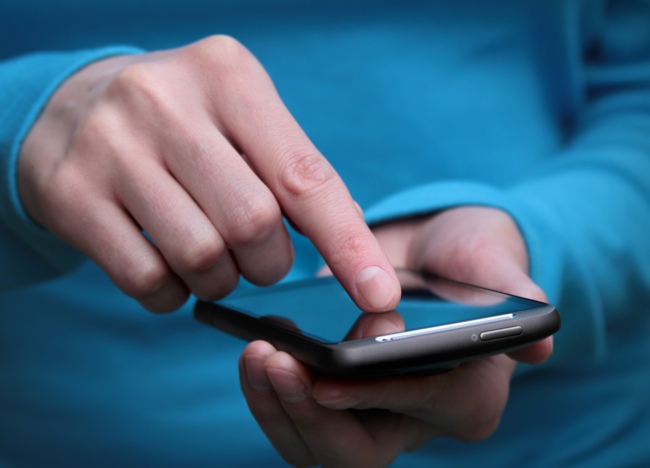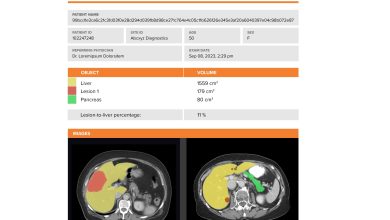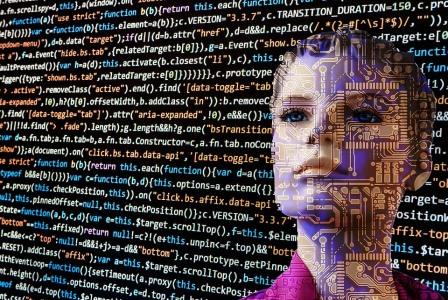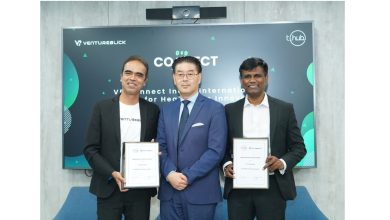How IoT is Helping Healthcare Transform

Atanu Garai: mHealth & ICT expert
Imagine you are in a café when you get a Facebook notification on your mobile handset about a friend posting photos from a party — and you log in to put a ‘Like’ mark on it. Now, imagine you are a cardiologist sitting in a café when a notification tells you of a critical patient — and you receive an ECG chart and patient parameters on a mobile software application and quickly issue instructions.
The former is fun. The latter saves lives. The technology is similar. Using the same technologies that let people worldwide share friendly updates and banter, doctors , paramedics and diagnosticians are coming together to bring ‘cloud computing’ — the business of using Internet-based applications to store, retrieve and intelligently use data — to the world of medicine. That’s the power of the Internet.
Internet has changed the way we live. Even if the Internet appears ubiquitous, the number of objects or devices connected to the internet is still greatly inferior to those that are not connected. The coming revolution will result from the need of replacing disconnected objects with connected ones, and making these objects ever more intelligent, and aware of their surroundings (using sensors). The resulting network promises to create disruptive business models.
We call this new step: The Internet of Things
In 2008 the number of devices connected to the Internet exceeded the number of people on Earth, and we foresee 50 billion Connected Things in 2020.
There are research studies which tell us that the remote patient monitoring is growing with a CAGR of 25%. This will change the way medicine is practiced and dispensed. The starting point for the convergence of Healthcare and Internet Of Things is represented by our smartphones which are not only connected to the net, but are also going to be ever more enriched with applications and sensors, and used by people as valuable tools for our Health. These early adopters armed with devices or even pen and paper, decided to improve their life or performance starting studying and measuring it: every day. The organization “Weightwatchers” is a classic representation of this phenomenon.
You are the first one to monitor your performance / conditions. Self-tracking leverage on consumer technologies instead of complex PRO medical device, makes you the protagonist sharing on the web, giving you the possibility to be aware of the feedback that your “stories” are receiving.
Some traditionalists could be afraid by this alternative approach to medication, but there is no need for fear. First of all because this is not a medication, but second – and most relevant – because self-monitoring makes people aware of how important prevention is.
If just an email/sms makes people 30% more likely for a patient to go to the doctor for an already scheduled meetings, imagine how effective could be a pills reminder (like same iPhone APPs already are doing) and how big is the opportunity to extend the space of Healthcare thought a real one to one interaction.
Dutch multinational Philips, which has 10,000 people working in India, has developed an ‘eICU’ — an electronic intensive care unit that brings together an array of diagnostic equipment, software, computers and handheld devices to provide an ambulance-to-patient bed link that its executives describe as an ‘Intellihospital.’ “Like the monitoring process in a traffic control room, an eICU can monitor patients in different hospitals 24×7 and makes key interventions at the right time,” Philips says.
India has more than 900 million mobile phone connections, while 740 million people live on less than R100 a day. Philips is connecting the two numbers through a system under which it plans to sell its eICU solutions to hospitals, so that semi-skilled health workers can feed back key data at low costs to monitor patients. Such technologies can dramatically improve healthcare because it takes two hours on an average for Indian hospitals to decide to which department a patient has to be taken.
Philips on Friday demonstrated an ambulance device that can take an ECG chart, monitor blood pressure and transmit it over mobile handsets to hospitals, where doctors can be ready with the right solution before the patient arrives as also proactively plan for their treatment.
Let’s look at the Mother and Child care segment. Per UN Millennium Development Goals 4&5, the aim is to reduce Maternal mortality by a third as also neonatal deaths. Mobility has a great role to play. ‘Mobility Sanjivini’, an innovative software of Manipal University, is all set to make rural health services more accessible, eco-friendly and paperless. To provide better health services to poor pregnant women and children in rural areas, Manipal University in association with Philips have developed ‘Mobility Sanjivini’, a software for healthcare data collection that is compatible with mobile phones. Kasturba Medical College and Hospital (KMC) of Manipal University has been providing free healthcare services to pregnant women and children at its seven Rural Maternity and Child Welfare Homes (RMCWH) in different villages of Udupi district. This new software will be helpful for auxiliary nurses and midwives attached to RMCWH. The software has been developed by students and teaching faculties of the Manipal Centre for Information Science (MCIS) and Manipal Institute of Technology with the support of Philips. Dr Veena G Kamath, head of the department of community medicine, KMC, opines that earlier, nurses of RMCWH used to visit houses in villages and collect healthcare data, including weight of babies, vaccinations for babies, blood pressure of mothers and other health status of mothers and babies. “During their visits, nurses used to note down the data on paper and later upload to the server of KMC via internet-enabled computers from RMCWH. The new software will save time and help nurses in collecting accurate data using mobiles. Nurses can collect healthcare data from houses in remote villages and upload it directly to the server within minutes through internet-enabled mobile phones,” says Veena. “This application is very helpful. For instance, if a pregnant or baby requires immediate healthcare, doctors sitting in hospital can guide nurses to provide emergency health services using the healthcare data uploaded to server by nurses,” she added. Another advantage is that this technology makes the entire procedure paperless. And folds into Internet of Things !!!
If the Internet of Things is the upcoming scenario, Healthcare already generated more Fitness and Personal Health oriented devices than in any other area
The whole process of taking care of patients, have to be “inclusive” and designed in a completely new way, based on User Experience and cutting edge design approach. Appropriate analysis and visualizations, typical of Web 2.0, should be a constant in the solution provided to any kind of users. Data and information generated by medical appliances – personal, wearable or geographically distant from major hospitals – carry with them the need to establish remote services which are secure, but also open and interoperable if necessary.
A “Health Cloud” is an asset that will be a primary need for hospitals as well as for medical device manufacturers (and a service for patients).
…at the beginning of the Web, no one believed that Amazon was set to have 5 to 10 times more revenue (online) than Walmart. In 2010 the brick and mortar retail giant, invested more than 100M for the acquisition of new technologies, and it is only a small amount given the gap they have to fill now.
The race is definitively started and a slice of this evolution is already on the store shelf.




